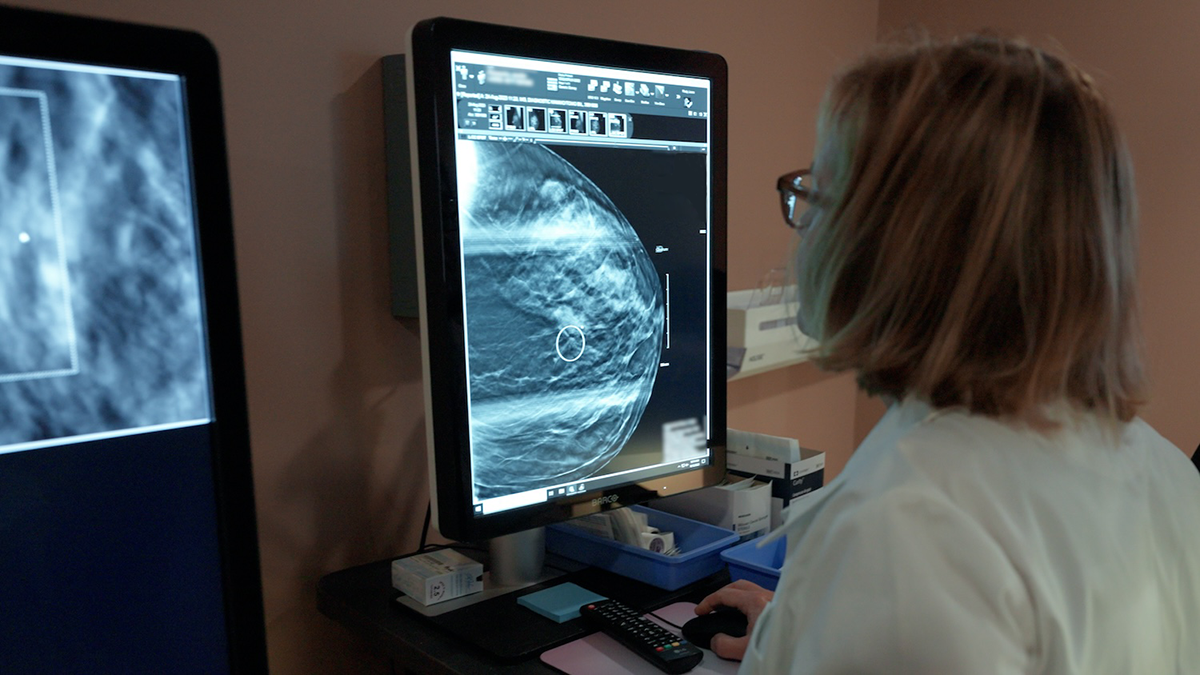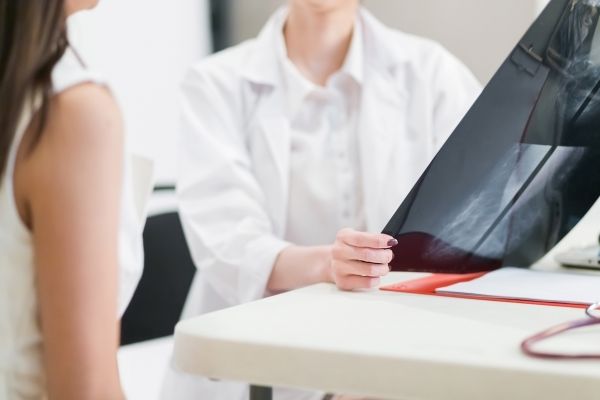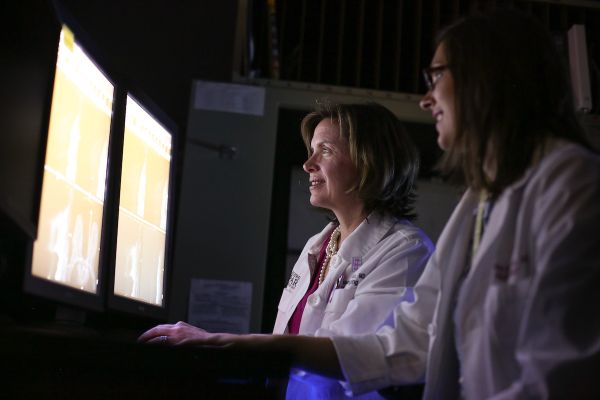If your mammogram revealed something abnormal, your doctor will need to investigate whether it’s benign or if it could indicate a possible cancer
Your next steps after an abnormal result may involve a second mammogram, or other imaging such as ultrasound or MRI. If the abnormality is confirmed through these tests, your doctor will schedule a biopsy.
A biopsy uses a thin, needle-like tube to take tissue samples from the suspicious area of the breast to be examined under a microscope. (An anesthetic will numb the area so you won’t feel pain.) The radiologist will use special imaging to guide the needle to the precise location. The type of imaging and biopsy device used for your procedure will depend on what your mammogram detected. Your radiologist will tell you ahead of time which procedure you will have.
"At Roswell, we have a dedicated team of breast radiologists who are experts in the detection and diagnosis of breast cancer," says Ermelinda Bonaccio, MD, FACR, Chair of the Department of Interventional and Diagnostic Radiology at Roswell Park Comprehensive Cancer Center.
The three most commonly performed biopsies are:
- MRI-guided biopsy
- Ultrasound-guided biopsy
- Stereotactic mammography guided biopsy
MRI-guided breast biopsy
This type of breast biopsy uses MRI images to guide a biopsy device to remove samples from the abnormal area. You will be placed in a similar position that you were for your first MRI, however, you will have a compression grid placed against your breast. Once in position, an MRI will be taken; from these photos your radiologist will be able to target exactly where the abnormality lies to extract tissue samples. Once this area is successfully targeted, a thin needle-like tube will be inserted into the breast. “A biopsy needle with a small vacuum will be inserted through the tube to take several tissue samples,” explains Dr. Bonaccio.
Ultrasound-guided breast biopsy
Using an ultrasound probe to target the abnormality, your radiologist will use a core needle biopsy device to take a small tissue sample from this area of your breast.
A needle biopsy is much less invasive than surgery and is most often the preferred method of collecting the tissue samples for evaluation.
Stereotactic mammography guided biopsy
For this biopsy, you will lie in either a prone position (on your stomach) or sit upright in a chair. “A stereotactic system uses x-rays taken from several angles to create a 3D image of the breast abnormality that wouldn’t be seen on a mammogram alone,” explains Dr. Bonaccio. “We can then mark the lesion, which gives us the exact location within the breast for biopsy.”
Similar to the MRI-guided biopsy, this procedure will be performed using a needle with a small vacuum — the tissue sample will then be sucked into the needle. “You shouldn’t feel any pain, just pressure,” says Dr. Bonaccio.
What to know before your breast biopsy
- Once arriving at Roswell Park, you will come to the Breast Imaging Center, on the second floor of the Scott Bieler Clinical Science Center.
- You will receive a local anesthetic before your biopsy — this will numb the area to ensure you do not feel any pain.
- Once tissue samples are taken, a small clip will be placed at the site of the abnormality. This clip is placed as a visual reference in case further evaluation of the breast is needed — it is MRI safe and will not set off metal detectors.
- The biopsy procedure should take 30 minutes to an hour to complete.
- Our dedicated technologists will be with you every step of the way, answering any questions you may have, confirming your comfort throughout and ensuring the incision site it cleaned and covered with protective dressing before you leave.
If your biopsy does show signs of cancer, we are here for you; our team can help you understand your diagnosis and work with you to create the best treatment strategy moving forward.
Get your second opinion with us
An accurate diagnosis and evaluation by a multispecialty team that focuses on all breast cancer types every day is important for your treatment.




